
How to Use ESP32 DEV MODULE: Examples, Pinouts, and Specs
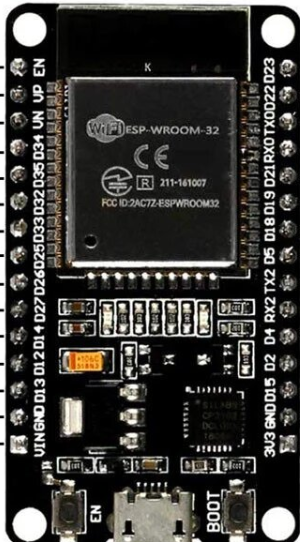
 Design with ESP32 DEV MODULE in Cirkit Designer
Design with ESP32 DEV MODULE in Cirkit DesignerIntroduction
The ESP32 DEV MODULE, manufactured by Espressif, is a powerful and versatile microcontroller module designed for a wide range of applications. It features integrated Wi-Fi and Bluetooth capabilities, making it an excellent choice for Internet of Things (IoT) projects, smart home devices, wearable electronics, and rapid prototyping. With its dual-core processor, low power consumption, and extensive GPIO options, the ESP32 DEV MODULE is a favorite among hobbyists and professionals alike.
Explore Projects Built with ESP32 DEV MODULE
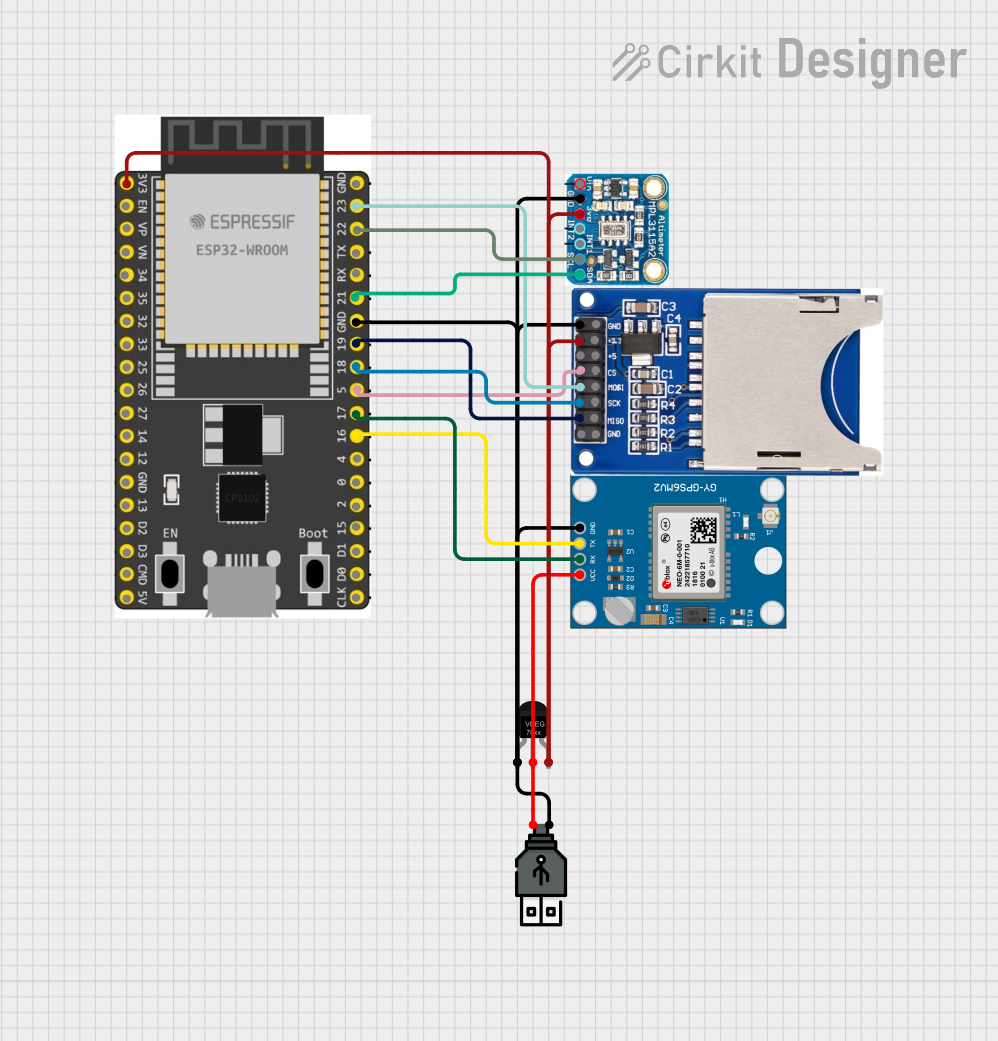
 Open Project in Cirkit Designer
Open Project in Cirkit Designer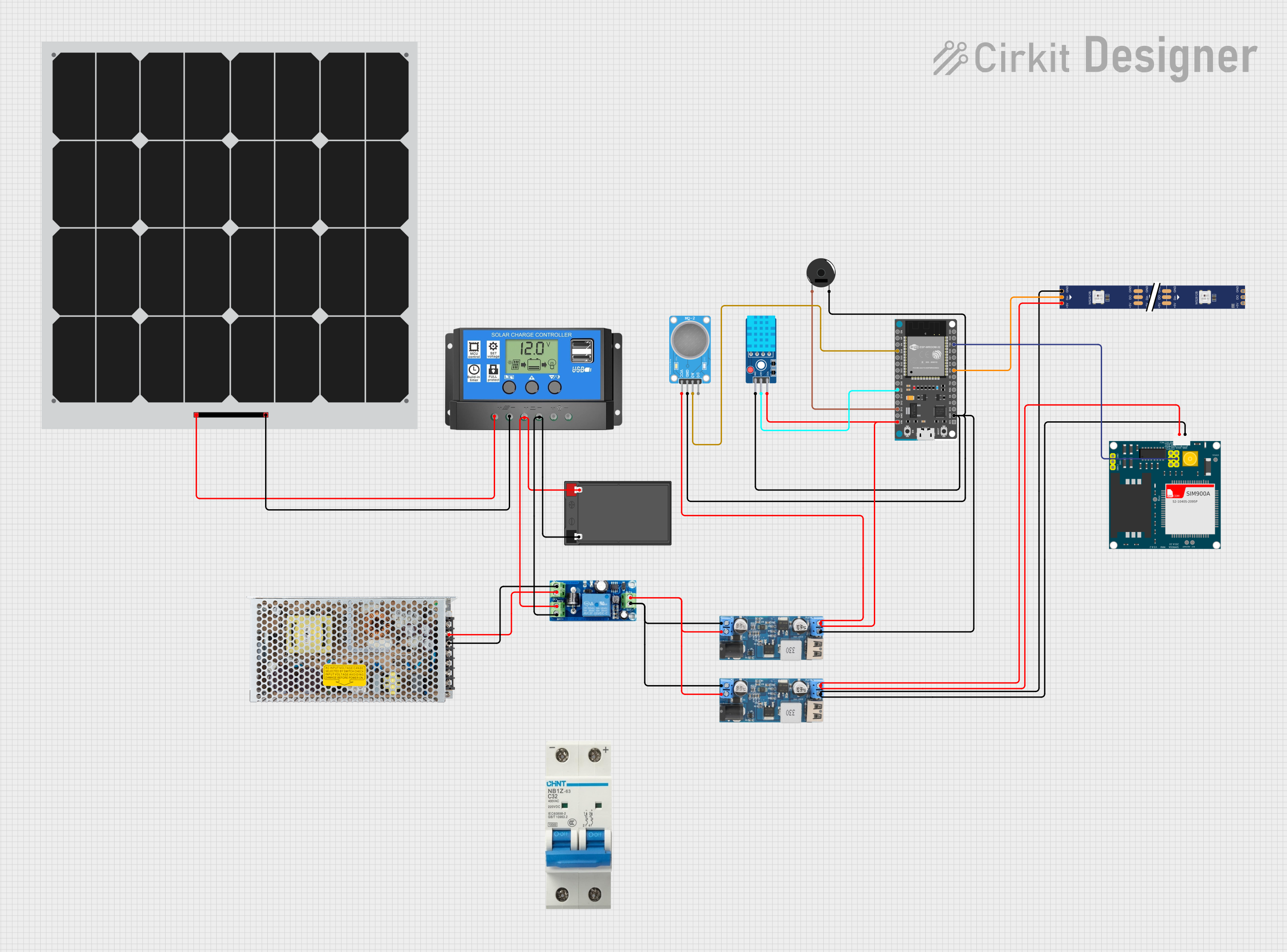
 Open Project in Cirkit Designer
Open Project in Cirkit Designer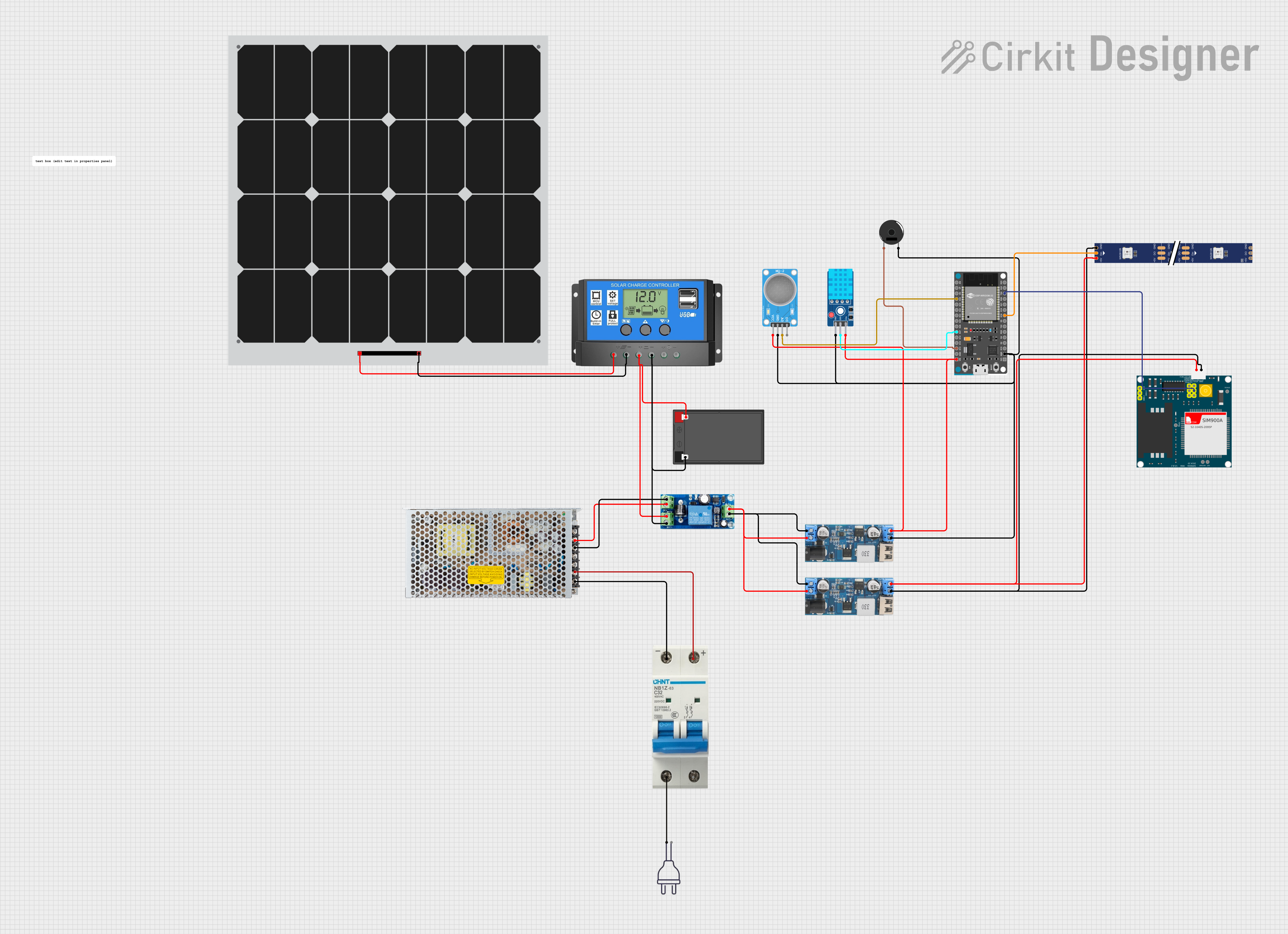
 Open Project in Cirkit Designer
Open Project in Cirkit Designer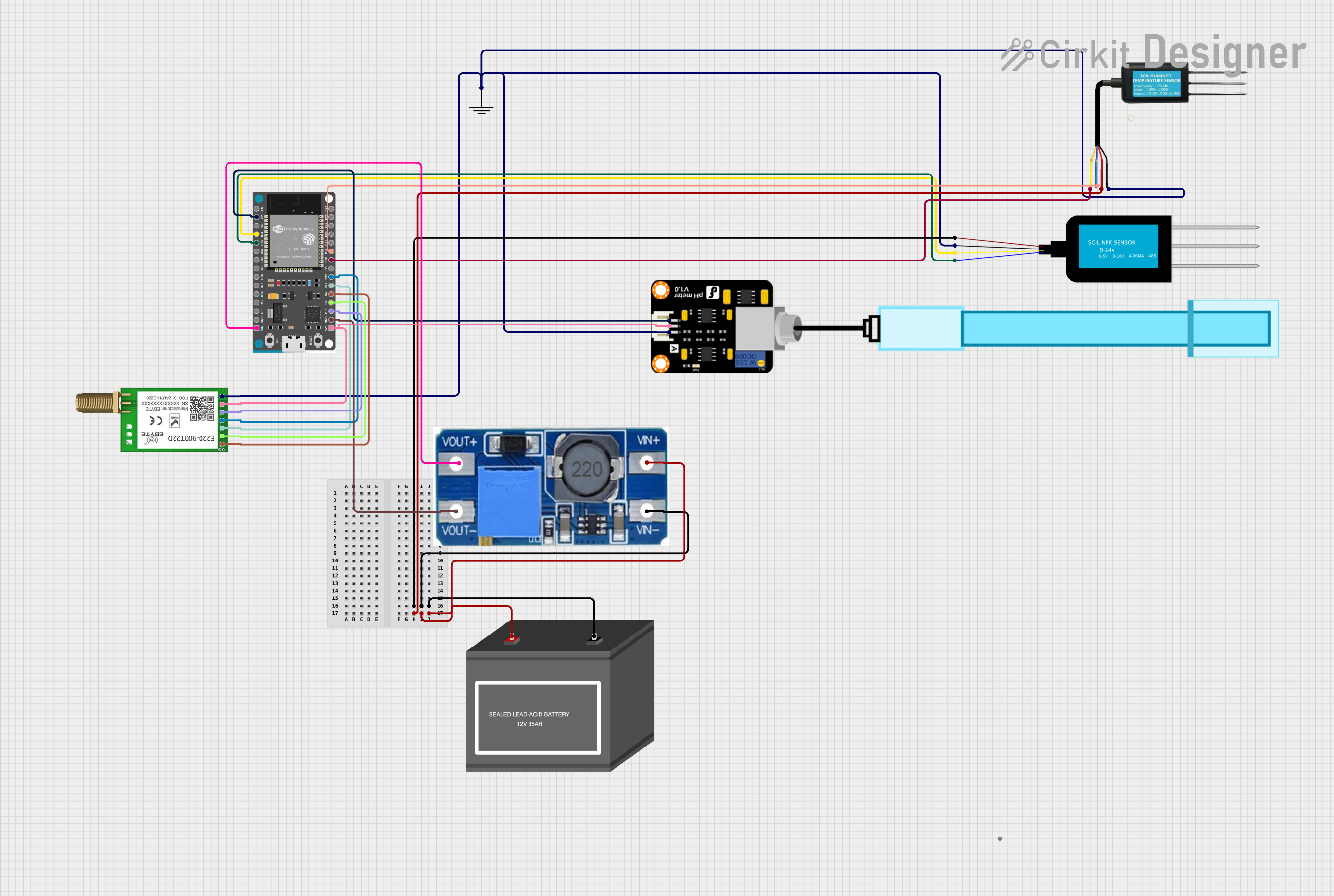
 Open Project in Cirkit Designer
Open Project in Cirkit DesignerExplore Projects Built with ESP32 DEV MODULE

 Open Project in Cirkit Designer
Open Project in Cirkit Designer
 Open Project in Cirkit Designer
Open Project in Cirkit Designer
 Open Project in Cirkit Designer
Open Project in Cirkit Designer
 Open Project in Cirkit Designer
Open Project in Cirkit DesignerCommon Applications
- IoT devices and smart home automation
- Wireless sensor networks
- Wearable technology
- Robotics and automation
- Prototyping and educational projects
Technical Specifications
The ESP32 DEV MODULE is built around the ESP32 SoC, which combines a dual-core processor with wireless communication capabilities. Below are the key technical details:
General Specifications
| Parameter | Value |
|---|---|
| Microcontroller | ESP32 (Xtensa® dual-core 32-bit LX6 CPU) |
| Clock Speed | Up to 240 MHz |
| Flash Memory | 4 MB (varies by model) |
| SRAM | 520 KB |
| Wireless Connectivity | Wi-Fi 802.11 b/g/n, Bluetooth 4.2 (BLE) |
| Operating Voltage | 3.3V |
| Input Voltage (VIN) | 5V (via USB or external power supply) |
| GPIO Pins | 34 (multipurpose, including ADC, DAC, PWM) |
| ADC Channels | 18 (12-bit resolution) |
| DAC Channels | 2 |
| Communication Interfaces | UART, SPI, I2C, I2S, CAN, PWM |
| Power Consumption | Ultra-low power modes available |
Pin Configuration
The ESP32 DEV MODULE has a variety of pins for different functionalities. Below is a summary of the pin configuration:
| Pin Name | Functionality | Description |
|---|---|---|
| VIN | Power Input | Accepts 5V input from USB or external source |
| GND | Ground | Common ground for the circuit |
| 3V3 | Power Output | Provides 3.3V output |
| EN | Enable | Resets the module when pulled low |
| GPIO0 | Boot Mode Selection | Used for flashing firmware |
| GPIO2 | General Purpose I/O | Can be used as PWM, ADC, or digital I/O |
| GPIO34 | ADC Input | Analog input only (no digital output) |
| TX0/RX0 | UART0 (Serial Communication) | Default UART pins for serial communication |
| SCL/SDA | I2C Clock/Data | Used for I2C communication |
| SPI Pins | MOSI, MISO, SCK, CS | Used for SPI communication |
Note: Not all GPIO pins support all functions. Refer to the ESP32 datasheet for detailed pin multiplexing information.
Usage Instructions
The ESP32 DEV MODULE is easy to integrate into a variety of projects. Below are the steps and best practices for using the module:
Basic Setup
Powering the Module:
- Connect the module to a computer or power source using a micro-USB cable.
- Ensure the power supply provides 5V and at least 500mA of current.
Programming the Module:
- Install the Arduino IDE and add the ESP32 board support package.
- Go to File > Preferences and add the following URL to the "Additional Board Manager URLs":
https://dl.espressif.com/dl/package_esp32_index.json - Open the Boards Manager (Tools > Board > Boards Manager), search for "ESP32," and install the package.
- Select "ESP32 Dev Module" from the board list.
Connecting Peripherals:
- Use jumper wires to connect sensors, actuators, or other peripherals to the GPIO pins.
- Ensure proper voltage levels (3.3V logic) to avoid damaging the module.
Example Code: Blinking an LED
The following example demonstrates how to blink an LED connected to GPIO2:
// Example: Blink an LED connected to GPIO2 on the ESP32 DEV MODULE
// Define the GPIO pin where the LED is connected
const int ledPin = 2;
void setup() {
// Initialize the GPIO pin as an output
pinMode(ledPin, OUTPUT);
}
void loop() {
// Turn the LED on
digitalWrite(ledPin, HIGH);
delay(1000); // Wait for 1 second
// Turn the LED off
digitalWrite(ledPin, LOW);
delay(1000); // Wait for 1 second
}
Best Practices
- Use a level shifter when interfacing with 5V logic devices.
- Avoid drawing excessive current from the GPIO pins (maximum 12mA per pin).
- Use decoupling capacitors near the power pins to reduce noise.
- For battery-powered applications, utilize the ESP32's deep sleep mode to conserve power.
Troubleshooting and FAQs
Common Issues
The module is not detected by the computer.
- Ensure the USB cable is functional and supports data transfer.
- Install the correct USB-to-serial driver (e.g., CP2102 or CH340, depending on the module).
The code fails to upload.
- Check that the correct board and COM port are selected in the Arduino IDE.
- Hold the "BOOT" button on the module while uploading the code.
Wi-Fi connection issues.
- Verify the SSID and password in your code.
- Ensure the router is within range and supports 2.4 GHz Wi-Fi.
GPIO pins are not functioning as expected.
- Confirm the pin's functionality and avoid using reserved pins (e.g., GPIO6–GPIO11 are used for flash memory).
- Check for short circuits or incorrect wiring.
FAQs
Q: Can the ESP32 DEV MODULE operate on battery power?
A: Yes, the module can be powered by a LiPo battery (via the VIN pin) or other 3.7V–5V sources. Use a voltage regulator if necessary.
Q: How do I reset the module?
A: Press the "EN" button on the module to reset it. Alternatively, you can pull the EN pin low.
Q: Can I use the ESP32 with MicroPython?
A: Yes, the ESP32 supports MicroPython. Flash the MicroPython firmware using tools like esptool.py.
Q: What is the maximum Wi-Fi range of the ESP32?
A: The range depends on environmental factors but typically extends up to 100 meters in open spaces.
By following this documentation, you can effectively utilize the ESP32 DEV MODULE for your projects and troubleshoot common issues with ease.